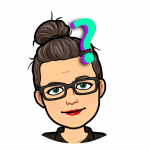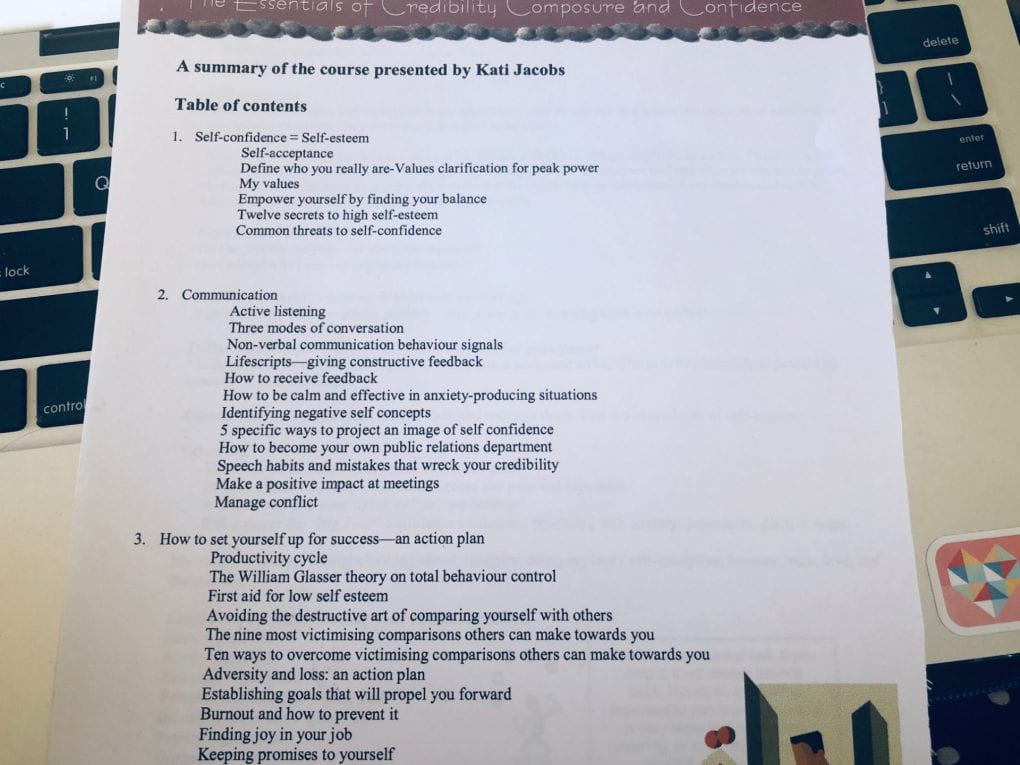Leading change, solving problems, building teams, effective communication & conflict resolution

Kotter’s 8 steps for leading change (in Madsen, 2016):
- Create urgency – a compelling case for change
- Form a powerful coalition – a team formed with key people as change champions
- Create a vision for change – short, clear, understandable, emotional, relevant and creative
- Communicate the vision – showcase it and demonstrate it
- Remove obstacles – physical or emotional, fears, concerns; use feedback to overcome obstacles
- Create short term wins – phases or steps where each step offers reward
- Build on the change – repeat the steps 1-6 so that it becomes routine
- Anchor the change – embed it into every day practice
“When facing a problematic situation, people can consciously choose to draw on powerful ways of thinking and acting—such as striving for accuracy and drawing on past knowledge. And as a person becomes more disposed to use a particular facet of practical intelligence, that disposition can grow and become more sophisticated” (Claxton, et al., 2016 p. 4).

Soft Skills / Dispositions / & 7 Ways to Problem Solve:
Soft skills or the preferred term: ‘dispositions’ are necessary for today’s workforce: effective communication, collaboration, ability solve problems and fitting in within the school vision. Claxton (et al., 2016)
Removing obstacles & Problem solving is probably the most challenging aspect of soft skills/dispositions (that and fitting in to the school vision – or what is perceived as the school vision). Complex problems cannot be solved easily and have to have a different approach as listed below (BNET Video, 2011; McNamara, 2017; & Belbin, 2010):
- Define the problem / Identifying needs in a statement or group of statements from stakeholders: What, where, how, with whom, when and why is a problem happening and what is the most urgent aspect? (Role titles: shapers and coordinators);
- Collect data about the problem (the what) and its causes (Role titles: Team members);
- Analyse the data for the cause (the why) (Monitors, Evaluators and Specialists);
- Plan a solution or action plan and implement it (the how); Consider what end result we want, plan the steps for success (use SMART steps), identify resources required including time and participants; and determine the roles of each stakeholder for the process; (Role titles: Plants and Resource investigators);
- Evaluate the success or failure based on more data; How will we know we have achieved our goal and solved the problem?; (Role titles: Monitors, Evaluators and Specialists)
- Standardise a solution – make it work in other areas; (Role titles: Implementors and Coordinators); and
- Learn something from this process as a team- what did we do well / poorly / where to next? (Role titles: Motivators; Team workers; Resource investigators; Completer finishers & Implementors).
This problem solving process is also applicable to our teaching practice as pointed out by Claxton (et. al., 2016, p.4), in that we can encourage soft skills / dispositions in our students by having them solve problems by asking themselves questions like:
“How can I draw on my past successes with such problems? What do I already know about the problem, and what resources do I have or might I generate? How might I approach this problem flexibly, looking at the situation in a fresh way? How can I draw upon my repertoire of problem-solving strategies? To make this challenge clearer, can I break this problem into its component parts and develop a strategy for understanding and accomplishing each step? Are there data I can draw on? How do my beliefs, values, and goals interact with this problem? Are any attitudes or emotions blocking—or enhancing—my progress?”

What is a team?
 While reading Belbin (2010) I am struck by the realisation of what was motivating my previous employer to choose me as the teacher who needed to be the one to not have their contract renewed: he didn’t believe I conformed or ‘fit’ into his vision of the school or the culture he and his executive team were building…and maybe there were times that I was taking a counter-productive role…?
While reading Belbin (2010) I am struck by the realisation of what was motivating my previous employer to choose me as the teacher who needed to be the one to not have their contract renewed: he didn’t believe I conformed or ‘fit’ into his vision of the school or the culture he and his executive team were building…and maybe there were times that I was taking a counter-productive role…?
It is interesting to me that Belbin (2010) suggests that the word ‘team’ is often maligned as to mean a ‘group’, ‘flock,’ ‘squad,’ or ‘audience’ rather than what it should be: reciprocated and dynamic engagement between unique and varied individuals.
Effective companies create a balanced or hybrid culture &/or a hybrid team, capable of protecting the company from problems that arise and the destructive work culture cycle [As a ‘team’ arises (however it may come about), a ‘visionary’ work culture is created and the need to be connected to the culture results in conformity. Conformity then results in an inability to speak up and solve problems, which, in turn, results in a leaders becoming ‘hard nosed’ towards members of the team in order to motivate and engage them. A group of leaders become ‘the shapers’ and a group of followers become ‘the team’ (Belbin, 2010)].
Creating a balanced team in 8 steps:
- Creating a balanced team begins with the vision of employment based on a need for a diverse range of team members, rather than someone who ‘fits’ with those already employed – a focus on skills rather than personality or conformity (Belbin, 2010);
- Goals of the company need to be clear as this will effect the creation of individual job roles (Belbin, 2010);
- Roles need to be well communicated so that all stakeholders are knowledgable about the abilities within the team (Belbin, 2010);
- Roles need to be flexible, so that as the team grows or changes, so too can the roles and voids can be filled or accommodated (Belbin, 2010);
- There are many kinds of roles that people can have, but according to Porteus, (n.d).; and Roberts, (2012), they all have one of three themes: Roles for tasks: Initiator- contributor: suggests new ideas; Information seeker: clarifies details; Opinion seeker or consensus tester: looks for opinions or values of others; Elaborator or clarifier: provides examples; and Orienter: summarises and keeps everyone focused. Maintenance roles (working smoothly): Encourager: Offers acceptance or praise; Harmoniser: mediator in conflicts; Expresser: senses group feelings and seeks clarification; Gatekeeper: keeps communication flowing; Compromiser: one who attempts conflict resolution; and Standard setter: testing overall group satisfaction with the process. Counterproductive roles: Aggressor: putting others down; Blocker / Un-cooperator: negative, stubborn and difficult; Withdrawer: removed from interactions either physically or mentally; Side-conversationalist: whispering, giggling, or having private conversations that distract or exclude others; Degrader: puts people down either directly or through jokes; or Dominator: is controlling or monopolises the group;
- Start with a talented person in the required area and find a manager who can relate well to that person, defending, guiding, supporting or mentoring them (Belbin, 2010);
- Keep team numbers small wherever possible (Belbin, 2010);
- The team must form an agreement on their operational style (Belbin, 2010).

14 Rules for Effective Communication:
 I worked in a call centre in the finance sector for many years in my 20’s just after I immigrated to Australia. Luckily, my employer was a large, publicly listed company who invested heavily in employee training and as a result, I have an in-depth understanding of communication — I just need to remember it all! Much of what was said in the videos in Module 3.2 (2019) Leading Change was a refresher for me.
I worked in a call centre in the finance sector for many years in my 20’s just after I immigrated to Australia. Luckily, my employer was a large, publicly listed company who invested heavily in employee training and as a result, I have an in-depth understanding of communication — I just need to remember it all! Much of what was said in the videos in Module 3.2 (2019) Leading Change was a refresher for me.
In the communication video (Alanis Business Academy, 2012) and in the Ceconi video (Nohria, 2016), Davies (n.d.), Minute MBA (2012) and in the Bender (2005) book chapter, I think it was important to note:
- Even when we don’t communicate, we are always communicating, either directly or indirectly – [which links to the ‘NSW DET Positive Behaviour for Learning’ and other child services mantra that ‘all behaviour is communication’];
- We need to recognise and follow the school’s hierarchy (seeking clarification and improving policies in times of doubt);
- We need to keep communication open even in challenging situations, utilising a variety of communication formats and refrain from being distracted;
- We need to remember to begin and end with positives and emphasise areas in which we agree (particularly, in Australian settings, performing an Acknowledgement of Country and brief welcome to individuals at the start of every meeting);
- We must consider the communication device carefully, taking into account ease of communication, our (direct) words (30% of communication) as well as the other (indirect) 70% of communication: body language, tone and volume (or lack thereof in digital formats);
- We need to consider our own encoding barriers and the barriers of our receiver: environment preferences, knowledge, age, personality, habits, background, social customs, emotional and mental diversity;
- Because of the barriers listed in #6, we also need to make a real effort to be careful and thoughtful of what we say and how we say it, e.g. adjusting language to suit the situation; using jargon, technical terms versus informal language; and trying to use ‘I’ statements wherever possible as opposed to ‘you’ statements;
- We need to be respectful, (rather than the most recently maligned ‘political correctness’) in both formal and informal situations;
- We need to be clear, concise and consistent when communicating across all platforms, regardless of whether your communication is about positive or negative information;
- We need to keep and open mind and be willing to compromise – and not just expect compromise from the receiver;
- The receiver decodes the message amongst ‘noise’ in the background, physical, mental or emotional issues that must also be considered; We need to monitor the receiver for active listening;
- Request or expect regular and ongoing feedback from the receiver (eg. ‘what I heard you say was…’) which we should not be jumping to conclusions, getting distracted nor thinking of our own response but instead, we must actively listen to the receiver’s message and remember what they have said; and
- We should respect the receiver’s confidentiality and avoid gossip [‘triangles.]
- We need to follow up and action anything that comes up in our conversations and survey our team to see if we are being productive leaders, such as a 360 Degree Feedback Survey (or similar).

Conflict Resolution:
Conflict (or ‘dissensus’) can be a great avenue for ‘win/wins’ and authentic change in an organisation (Plocharczyk, 2013, p.308). Our job as leaders in times of conflict is: timely, transparent and open communication, listening (actively), responding with new points of view and perspectives, and resolution by encouraging creative innovations – never avoidance (Plocharczyk, 2013, p.311). We need to focus on the process/’the how’ the work is being done, rather than the people/’the who’ doing the work (Johnson in Plocharczyk, 2013 p.316). We need to have proactive, clear guidelines and policies for behaviour defined and communicated simultaneously, so that everyone understands the policy and the restorative practices that will occur in the event of inappropriate behaviours.
Types of conflict (more than one can occur at a time): Intra-personal (conflict within yourself); Solution: releasing anxiety through talking to others; Interpersonal (individual conflict with another person); Solution: adjustments or mediation; Intra-group (individual conflict within members of a team); Solution: embracing the conflict as necessary part of problem-solving (see this article by Jacob Stringer on New Compass about consensus versus dissensus) and goal achievement or mediation; Intergroup (a group conflict with another group in the organisation); Solution: clarification of goals, interests, competition, resources, or group identity (Evans, 2013); and Task / Organisational (individual conflict with others based on the constructs or policies of an organisation such as tight budgets, shared resources, unequal workloads, unclear future employment, boredom or undefined values, goals, objectives or role descriptions); Solution: ‘integrative conflict management’, collaboration, analytical thinking, problem solving, mediation from a third party, or clarification/revision of company policies (Plocharczyk, 2013, p.311).
So what kind of conflict manager will I be? I took the survey suggested in the module but I didn’t really get much out of it. The questions seemed repetitive and out of context. I often get emotional at conflict situations, depending on who they are with. (I have  anxiety, undiagnosed, in all social situations but particularly those that are new or unfamiliar). I recognise that and try to listen more than I speak.
anxiety, undiagnosed, in all social situations but particularly those that are new or unfamiliar). I recognise that and try to listen more than I speak.
I like the idea of having a policy on behaviour (like the NSW DET Code of Conduct) and utilising the Positive Behaviour for Learning / Restorative practice techniques that we use with students also in my work team. I realise there are those who disagree that behaviour is communication but I do believe that it is. And it is my job to listen to that behaviour and act appropriately. I will try to use Judy Ringer’s checklist in times of conflict, and a 360 Degree Feedback Survey (or similar) to make sure I am communicating and responding appropriately… Hope I will be up to the challenge!
References:
Alanis Business Academy. (2012, August 2). Episode 19: How the communication process works [Video file]. Retrieved from https://www.youtube.com/watch?v=q6u0AVn-NUM
[7.35 mins]
Belbin, R. M. (2010). The art of building a team. Chapter 9, pp. 97-106. Team roles at work (2nd ed.). Retrieved from ProQuest Ebook Central.
Bender, Y. (2005). Building effective communication, Part 1, p.3-18. The tactful teacher: Effective communication with parents, colleagues and administrators. Chicago, IL: Nomad Press. Retrieved from ProQuest Ebook Central.
BNET Video. (2011, June 8). 7 step problem solving. [Video file]. Retrieved from https://www.youtube.com/watch?v=bZXDGQSuF9I [4.38 mins]
Claxton, G., Costa, A., & Kallick, B. (2016). Hard thinking about soft skills. Educational leadership. 73-6 p.60-64. Retrieved from https://www.learningpersonalized.com/wp-content/uploads/2016/09/Hard-Thinking-about-Soft-Skills.pdf
Davies, L. (n.d.). Effective Communication. In Kelly Bear. Retrieved from http://www.kellybear.com/TeacherArticles/TeacherTip15.html
Evans, B. (2013, August 16). Types of conflict: Four classifications [Blog post]. Retrieved from http://www.typesofconflict.org/types-of-conflict/
Madsen, S. (2016). Kotter’s 8 step change management model [Video file]. Retrieved Mar. 2017 from https://www.youtube.com/watch?v=7qlJ_Y8w5Yk [4 mins]
McNamara, C. (2017). Problem solving and decision-making. In Free Management Library, Retrieved from http://managementhelp.org/personalproductivity/problem-solving.htm#guide
Minute MBA. (2012, November 13). Let your ears do the talking: How good managers listen [Video file]. OnlineMBA.com. Retrieved from https://www.youtube.com/watch?v=nk1VnXTC1_I [1.39 mins]
Nohria, N. [HR360Inc]. (2016, January 7). Steps to successful employee communication [Video file]. Retrieved from https://youtu.be/bRXLTZMvy-U
Plocharczyk, L. (2013). Managing conflict and incivility in academic libraries (part 12). In K. Blessinger & P. Hrycaj (Eds.), Workplace culture in academic libraries. Retrieved from ProQuest Ebook Central. [Elsevier Science version]
Porteus, A. (n.d.). Roles people play in groups. Stanford University. Retrieved March 5, 2017 from https://web.stanford.edu/group/resed/resed/staffresources/RM/training/grouproles.html
Roberts, R. (2012, September 12). How identifying the different roles can help groups work better together [Blog post]. Retrieved from https://elt-resourceful.com/2012/09/12/how-identifying-the-different-roles-we-play-can-help-groups-work-better-together/
